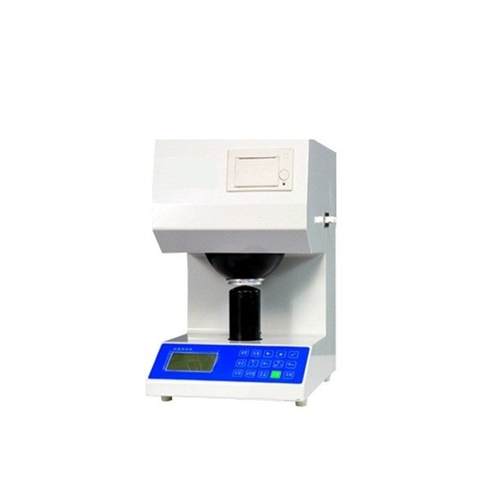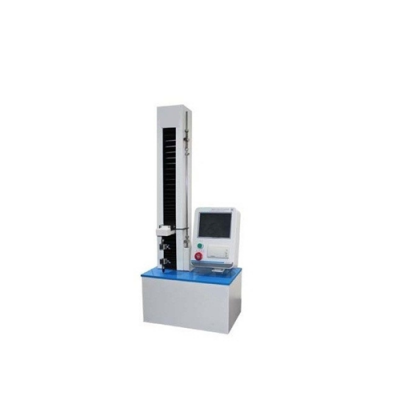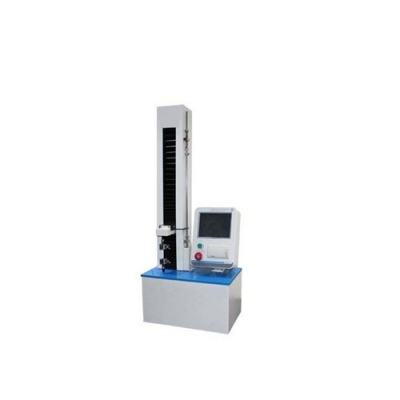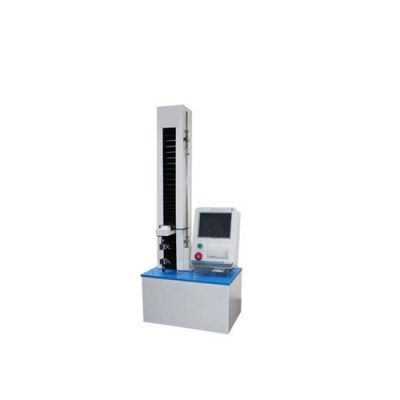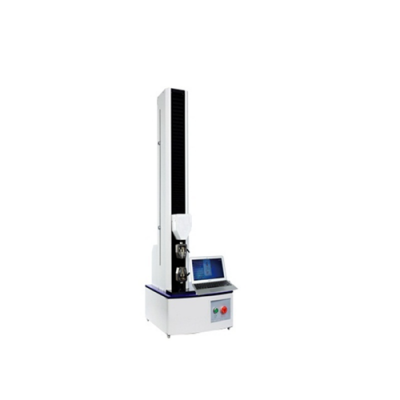Whiteness meter
Product ID: PT103A
Whiteness Meter is widely applied in papermaking, fabric, printing, plastic, ceramic and porcelain enamel, construction material, chemical industry, salt making and other testing department that need to test whiteness. PT103A brightness meter also can test the paper’s transparency, opacity, light scatting coefficient and light absorption coefficient.
Product features
1Test ISO whiteness (R457 whiteness) .It can also determine the fluorescent whitening degree of phosphor emission.
2 Test of lightness tri-stimulus values (Y10), opacity and transparency. Test light scatting coefficient and light absorption coefficient.
3 Simulate D56. Adopt CIE1964 supplement color system and CIE1976 (L * a * b *) color space color difference formula. Adopt d / o observing geometry lighting conditions. The diameter of diffusion ball is 150mm. The diameter of test hole is 30mm or 19mm. Eliminate the sample mirror reflected light by light absorbers.
4 Fresh appearance and compact structure; Guarantee the accuracy and stability of measured data with advanced circuit design.
5 LED display; Prompt operation steps with Chinese. Display statistical result. Friendly man-machine interface makes the operation simple and convenient.
6 Instrument is equipped with a standard RS232 interface so it can cooperate with the microcomputer software to communicate.
7 Instruments have a power-off protection; the calibration data is not lost when the power is cut off.
Product application
Brightness Meter is widely applied in papermaking, fabric, printing, plastic, ceramic and porcelain enamel, construction material, chemical industry, salt making and other testing department that need to test whiteness. PN-48B brightness meter also can test the paper’s transparency, opacity, light scatting coefficient and light absorption coefficient.
Technical standards
In accordance with GB3978-83: Standard lighting and lighting and observation conditions.
Simulate D56. The diffuse diameter is 150mm and test whole diameter is 30mm or 19mm. It uses light absorber to eliminate the influence caused by the specimen’s mirror reflecting light.
R457 whiteness optical spectral power distribution system in the peak wavelength 457nm, FWHM 44nm, RY10 optical system in line with the GB3979-83: object color measurement.
GB7973-87: Pulp, paper and paperboard diffuse reflectance factor assay (d/o method).
GB7974-87: paper and paperboard whiteness assay (d/o method).
ISO2470:Paper and board Blu-ray diffuse reflectance factor method (ISO brightness);
GB8904.2:Pulp whiteness assay
GB1840:Industrial potato starch assay
GB2913:Plastics whiteness assay
GB13025.2:Salt making industry general test method; whiteness assay
GB1543-88:Paper opacity determination
ISO2471:Paper and cardboard opacity determination
GB10336-89:Paper and pulp light scatting coefficient and light absorption coefficient determination
GBT/5950 construction material and non-metallic mineral products whiteness assay
GB10339 Citric acid whiteness and detection method
GB12911:Paper and paperboard Ink absorption determination
GB2409:Plastic yellow index. Test method
Technical parameter
1.Zero drift: ≤ 0.1 %;
2.Indication drift: ≤ 0.1 %;
3.Indication error: ≤ 0.5 %;
4.Repeatability error: ≤ 0.1 %;
5.Specula reflection error: ≤ 0.1 %;
6. Sample size: the test plane not less than φ30mm, the thickness of no more than 40 samples
7.Power: AC 220V ± 10%, 50HZ, 0.4A.
8. Work environment: Temperature 0 ~ 40 ℃, relative humidity of not more than 85%
9. Size and weight: 375 × 264 × 400 (mm), 16 kg
Main fixtures
1.PT103A brightness meter;
2.A power line; a black trap;
3.Two pieces of no fluorescent white standard plate;
4. One piece of fluorescent whitening standards board;
5. Four light bulbs;
6. Printing paper 4 volumes;
7. A Power sample;
8. Certification;
9. Specification;
10.Packing list;
11.Warranty;
12.Optional: constant pressure powder sampler.
INQUIRY
CATEGORIES
- Coal Testing
- Petroleum Testing
- Muffle Furnace
- Highway Instruments
- Direct Reading Spectrometer
- Abbe & Auto Refractometer
- Agricultural Instruments
- Autoclave/Sterilizer
- Weighting Balance & Scales
- Safety Cabinet & Clean Bench
- Carbon & Sulfur Analyzer
- Centrifuge
- Clinical Instruments
- Colorimeter & Color Light Box
- Dehumidifier & Humidifier
- Electrolyte Analyzer
- Electrophoresis Cell
- Freeze Dryer
- Gas Generator
- Gene Test
- Heating & Drying Oven
- Pathology Instruments
- Ice Maker
- ICP Spectrometers
- Incubators
- Infrared Thermometer
- Freezer & Refrigeration Products
- Liquid Nitrogen Container
- Biological Microscope
- Microwave Digestion & Extraction
- Mixer & Homogenizer
- Mixer & Shaker
- Moisture Analyzer
- Moisture Tester
- Oil-in-Water Analyzer
- Pack & Paper Testing
- Automotive teaching model
- Particle Counter
- Plastic Testing
- Particle Size Analyzer
- Polarimeter & Saccharimeter
- Rotary Evaporator
- Sampling Instruments
- Small Instruments
- Spectrophotometer
- Water Purifier
- Water quality detector
- XRF
- Water Testing
- AUTOMATIC TITRATORS
- Thermal Analysis
- Automatic Kjeldahl Analyzer
- TOC Analyzer
- Universal Testing Machine
- Price List of Reagents
- Fluorescence Spectrometer
- NIR Spectrophotometer
LATEST NEWS
CONTACT US
Contact: Harry
Phone: 00852-82283663
E-mail: info@lab-kits.com
Add: ROOM 1, 16F, EMPRESS PLAZA, 17-19 CHATHAM ROAD, TSIM SHA TSUI, KOWLOON, HONG KONG
